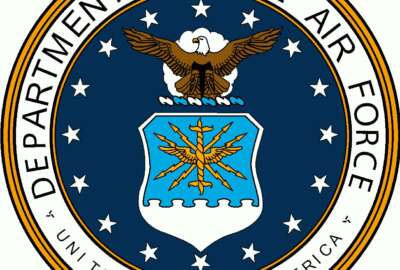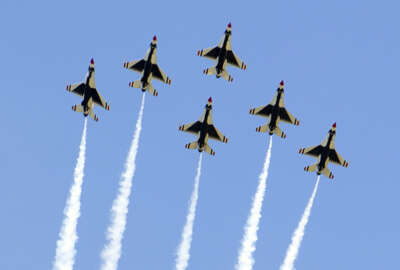
Air Force needs more manpower to improve readiness
Three top Air Force generals told Congress that manpower issues were the greatest challenge to the organization’s readiness. While specific concerns varied...
Three top Air Force generals told Congress that manpower issues were the greatest challenge to the organization’s readiness. While specific concerns varied between the USAF, the Reserves and the Air National Guard, each agreed that recruiting and retention is their top priority.
“Assessing and retaining more airmen is the first step to improve our readiness,” Maj. Gen. Scott West, deputy chief of staff for Operations for the Air Force, told the House Armed Services Subcommittee on Readiness during a March 22 hearing. “Today we need congressional support for an FY17 appropriation and amendment that accelerates our readiness recovery. Repeal of the budget control act and predictable future funding are critical to rebuilding military readiness.”
Lt. Gen. Maryanne Miller, chief of the Air Force Reserves, broke her manpower needs down a bit further.
“With respect to our personnel readiness challenges, I am focused on three main areas: the first being the pilot shortage, the second the shortfalls in full-time support, and finally, critical skills manning,” Miller said.
She explained that critical skills are career fields that do not have enough people to support them based on the demand — namely pilots on the officer side, and cyber, intelligence and Remote Piloted Aircraft Sensor operators on the enlisted side.
The Air Force has been losing pilots at a steady rate for quite some time.
Gen. David Goldfein, Air Force chief of staff, said last year there were several reasons for that: The operational tempo for combat pilots has been extremely high for two decades, the commercial airline industry has a strong appetite for new hires at the moment, and the Air Force hasn’t received permission to increase its combat pilot retention bonuses since 1999.
Currently, the Air Force is facing a shortfall of about 600 pilots.
“We are currently 300 pilots short across the Air Force Reserve,” Miller said. “Our percentage of part-time pilots are around 92 percent. It’s the full-time piece we’re struggling with right now. We’re roughly 66 percent manned on the full-time side, and that is due to the pull from airlines. And the second part of that is being able to compete in the salary range of the technician force. So where could we use your assistance? In relocation, retention and bonuses.”
Meanwhile, Lt. Gen. Scott Rice, director of the Air National Guard, said he would like to grow his force from 106,000 to 110,000, with most of the increase devoted to maintenance.
The Air Force told Congress in 2016 that it was short about 4,000 maintainers, airmen who care for military aircraft and their components. In February 2017, it said that shortage was down to 3,400 with plans to reach full staffing by 2020 or 2021, but hiring isn’t its only issue.
The positions are filled by young, inexperienced workers, who need training before they can handle the responsibility of caring for complex weapons systems. That training takes years.
And the lack of maintainers is connected to yet another issue affecting Air Force readiness: the status of its planes. Right now, West said, the Air Force has only 5,500 planes, down from 8,100. The average age of those planes is 27-years old.
“Given that the age of the aircraft and parts obsolescence and that older aircraft tend to fail in newer ways, it’s more difficult to make them available for training, which affects our readiness,” West said. “Coupled with our shortage of maintainers to be able to generate sorties to improve our readiness and enable us to train for a full spectrum of operations, it exacerbates the issue with sustaining older fleets with less than the required manning in order to achieve the readiness levels that we need to.”
Finally, West said that the Air Force is putting too much money into maintaining excess infrastructure, which currently stands at about 25 percent of the service’s total infrastructure.
“If the Congress supported Air Force growth to 350,000, we would still have 24 percent excess infrastructure capacity,” West said. “Today we have a backlog of $25 billion in either MilCon or Facilities Sustainment, Restoration and Modernization. If we were to be able to apply $1 billion per year, it would just arrest the decline of what we have to do to keep facilities up to proper standards.”
He said that money could be going to modernizing aircraft or increasing end strength instead.
“Our total obligation authority is limited, so we have to make tough choices,” West said.
He recommended another round of base realignment and closures to rid the service of some of its excess infrastructure.
But Miller emphasized that the primary problem remains convincing airmen to stick around, rather than taking their skills elsewhere for more money after completing their training.
“Recruiting is really not the issue,” she said. “We can get them in the door. On the active component time, they’re coming in to the Air Force, they’re coming into pilot training on the Reserve side. I fill all my quotas. It’s retaining them. It’s a retention issue.”
Copyright © 2025 Federal News Network. All rights reserved. This website is not intended for users located within the European Economic Area.
Daisy Thornton is Federal News Network’s digital managing editor. In addition to her editing responsibilities, she covers federal management, workforce and technology issues. She is also the commentary editor; email her your letters to the editor and pitches for contributed bylines.
Follow @dthorntonWFED




